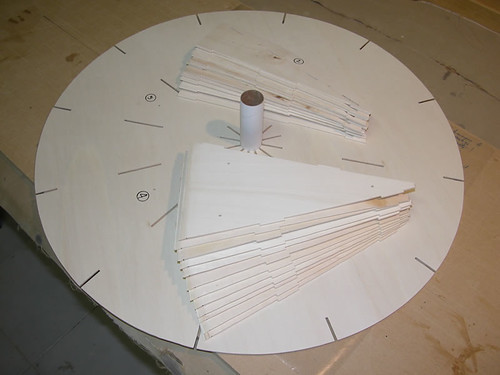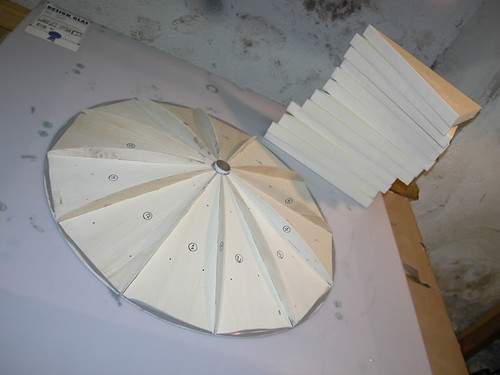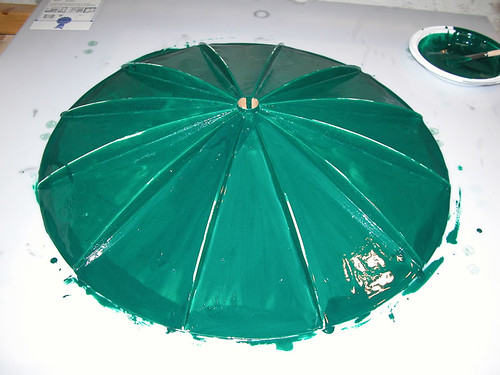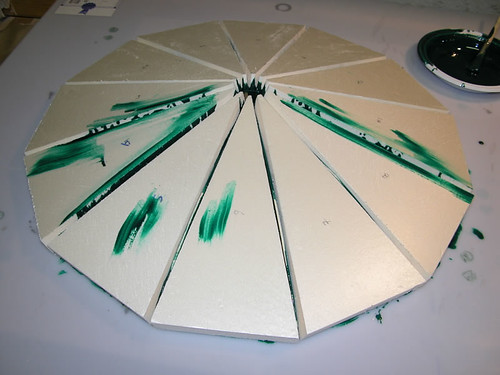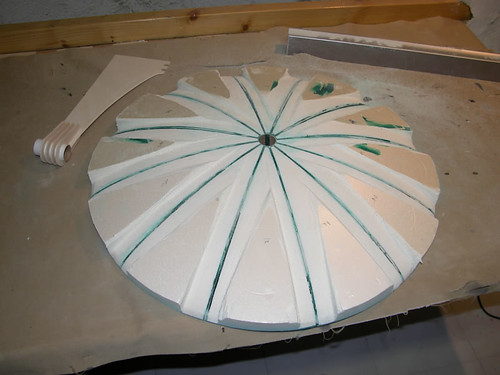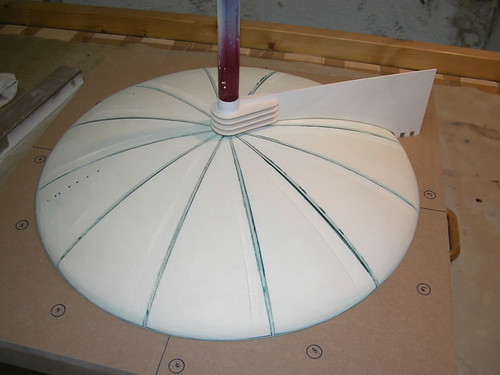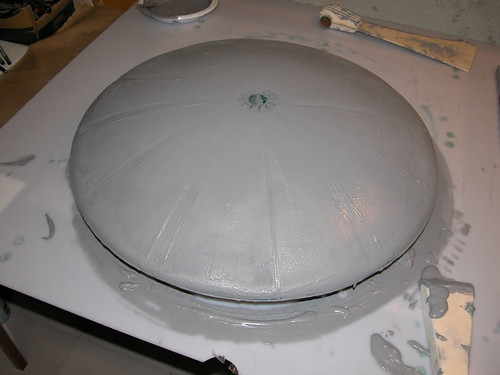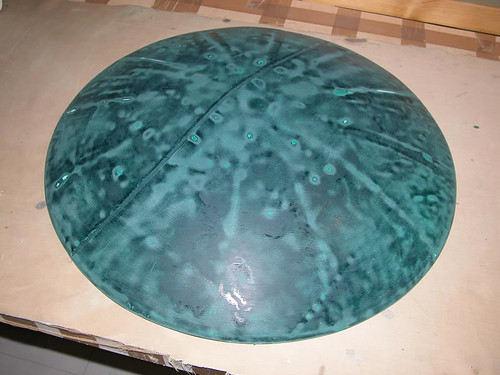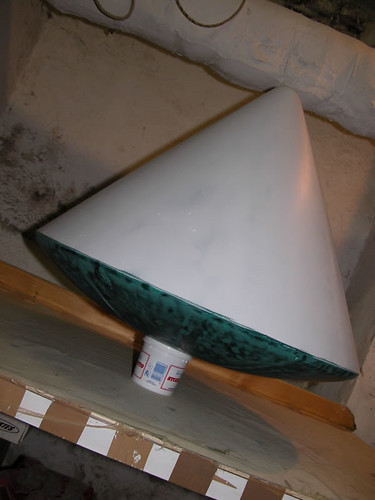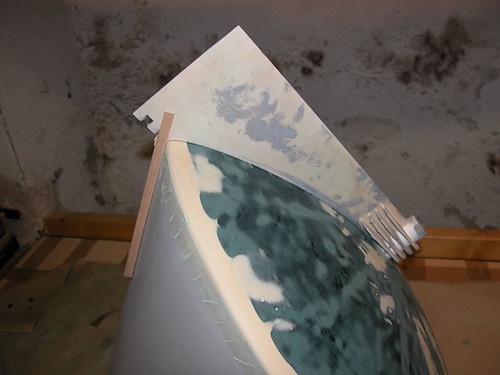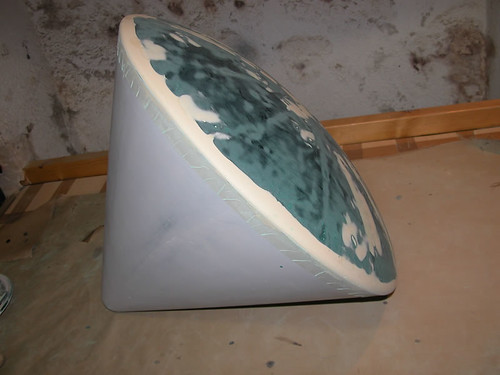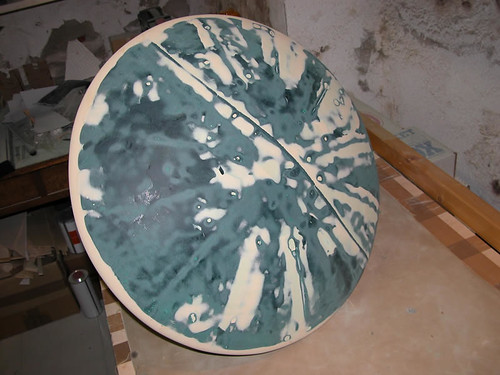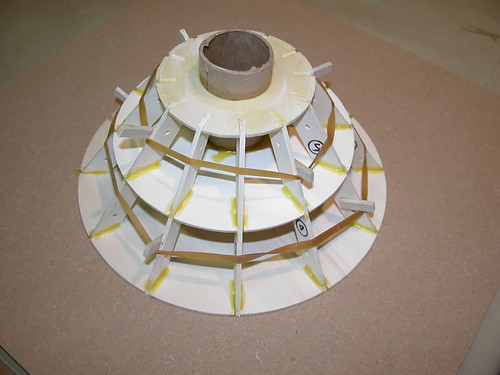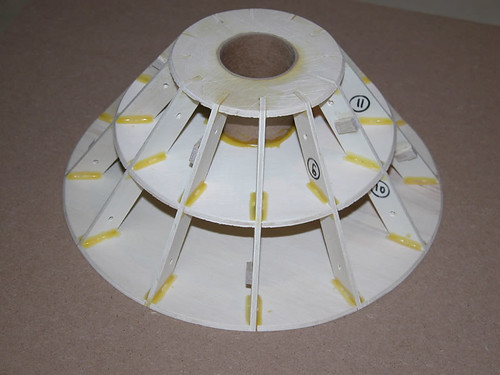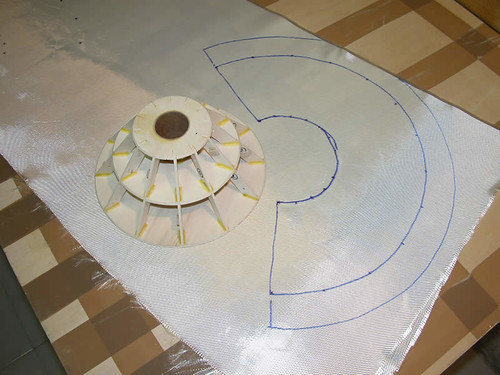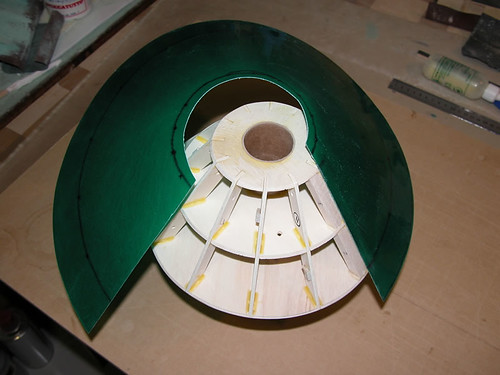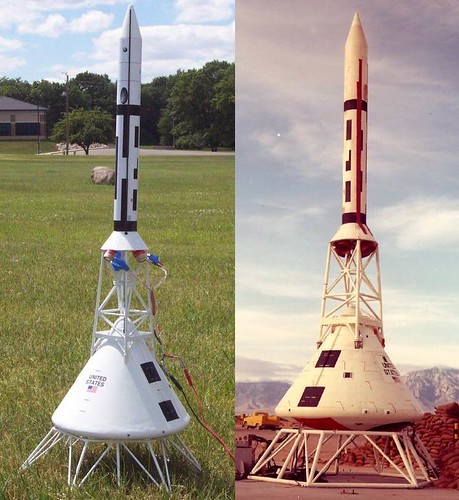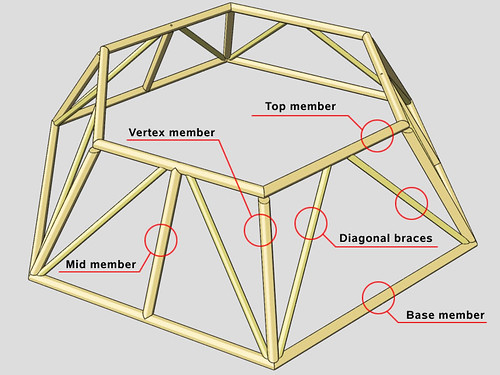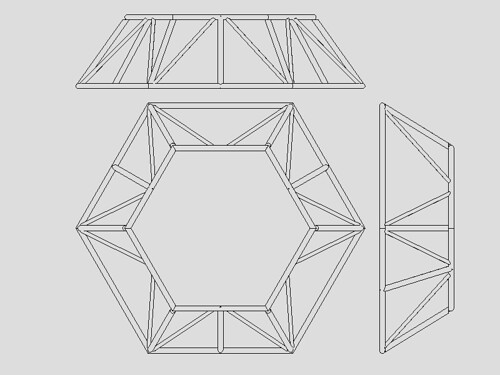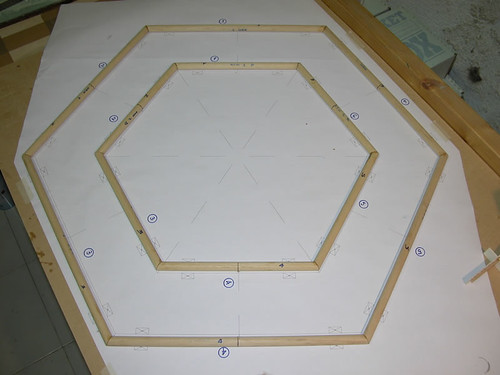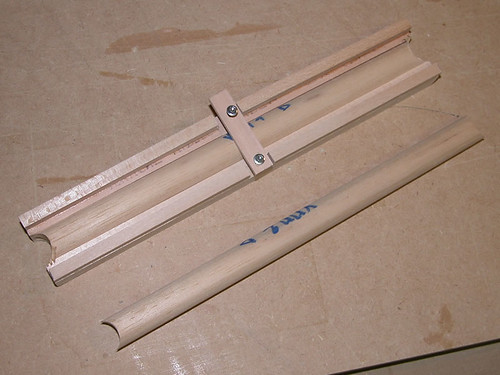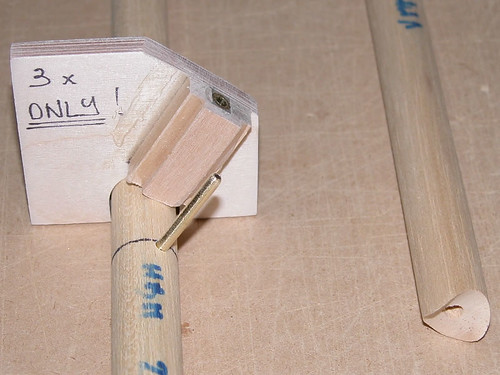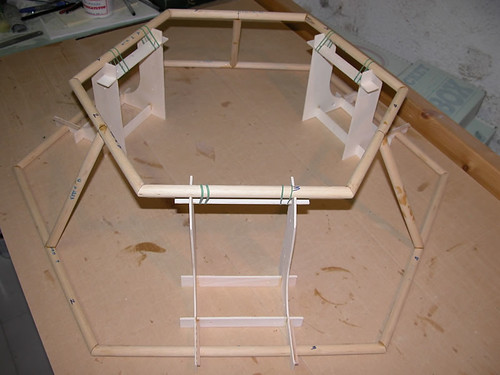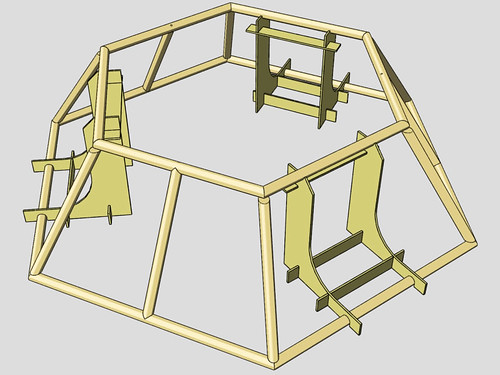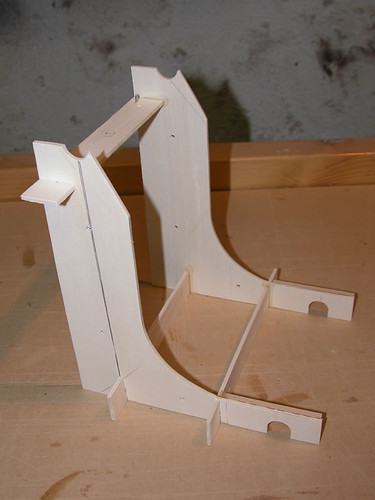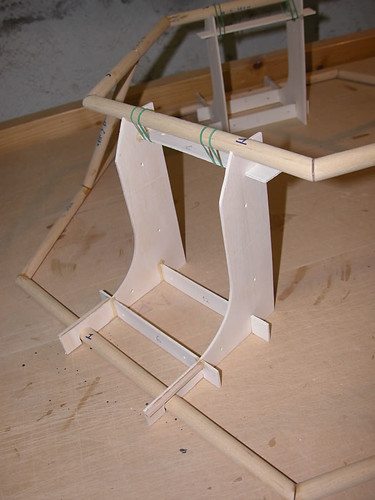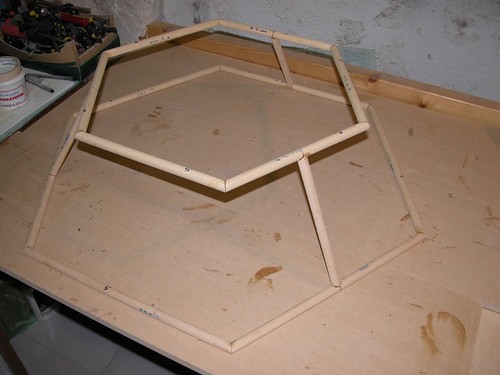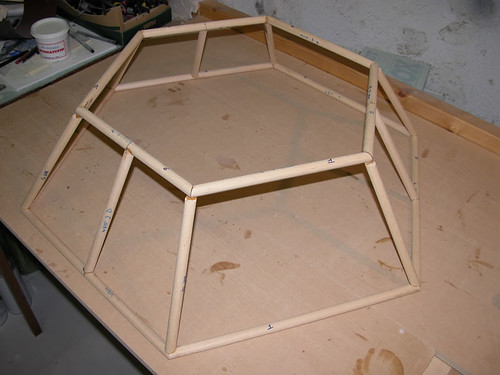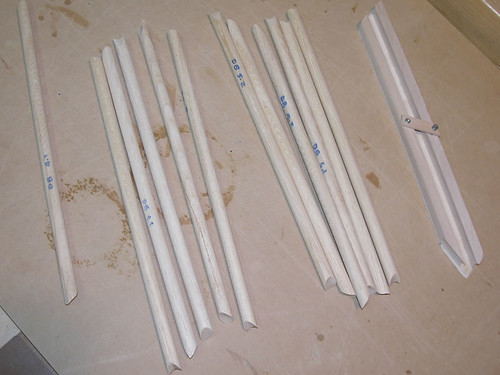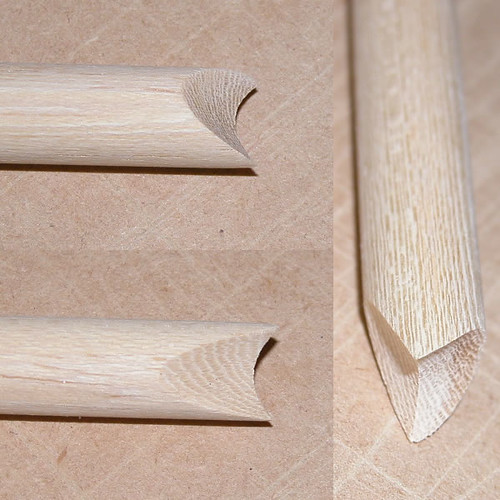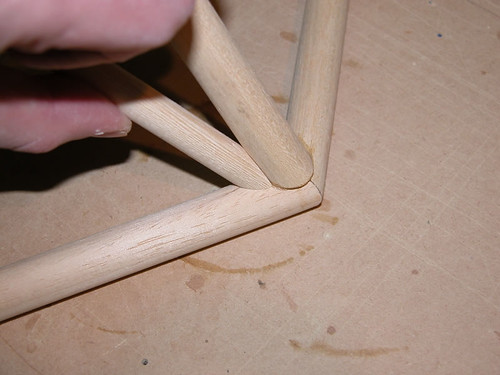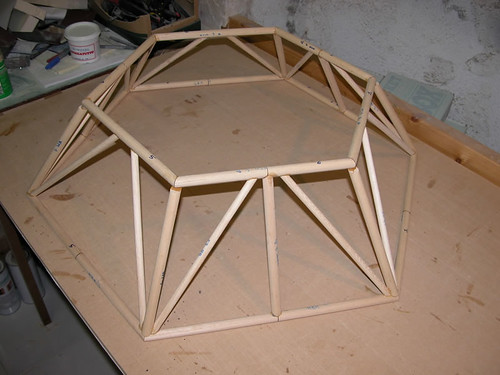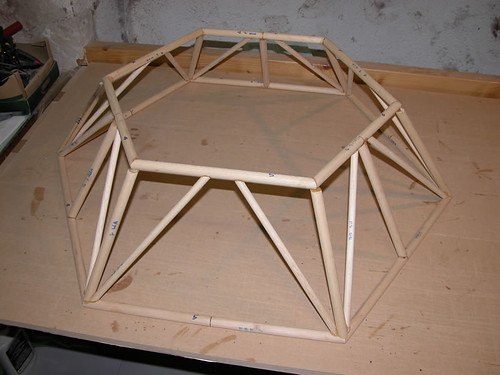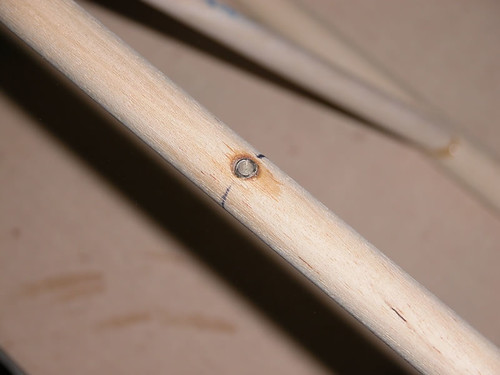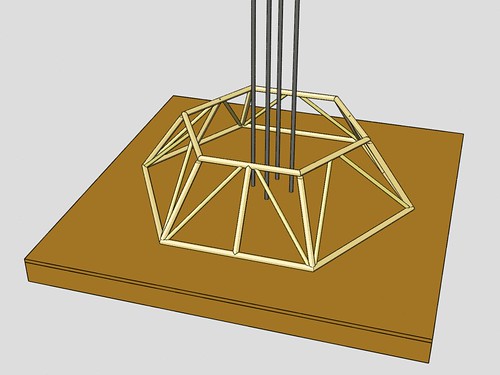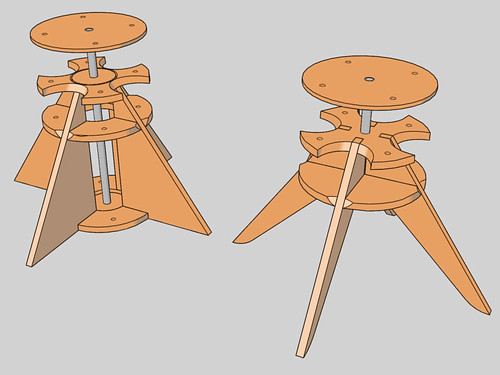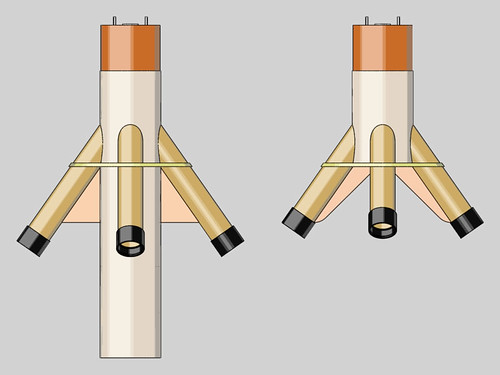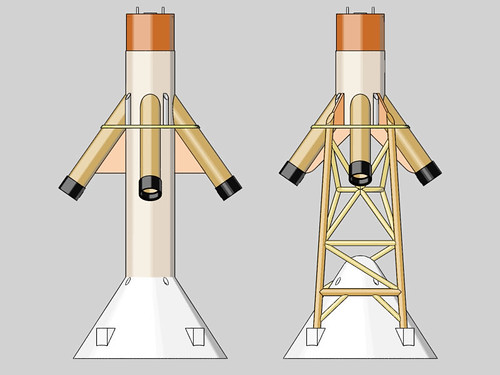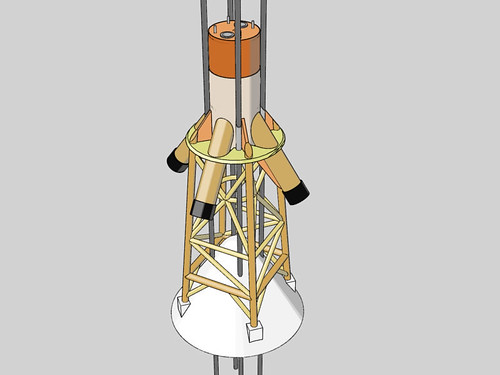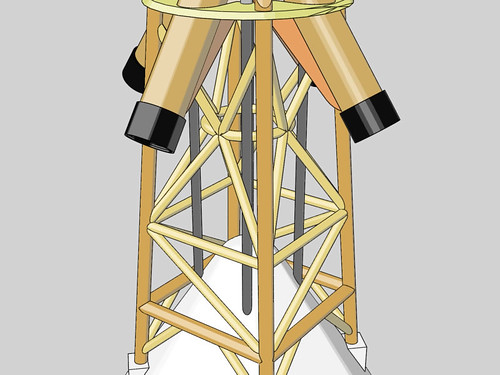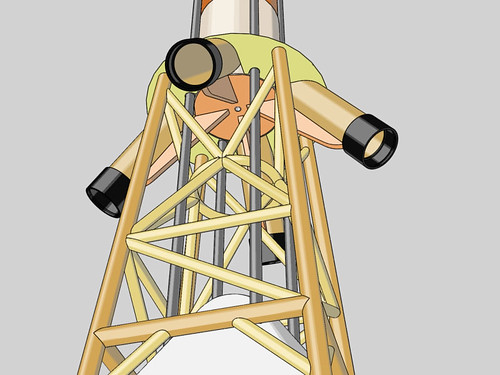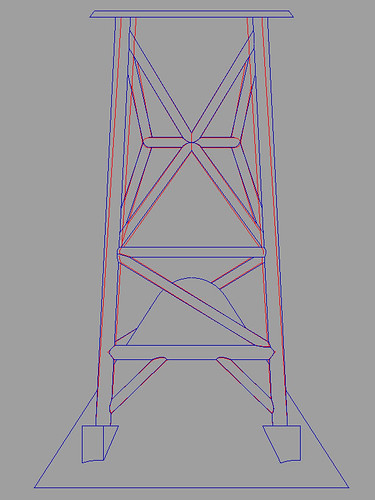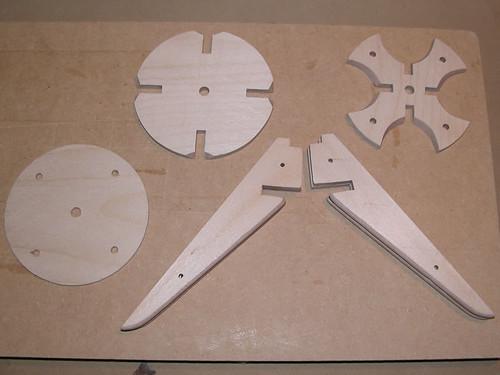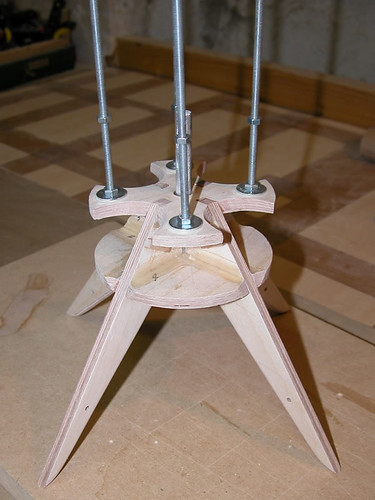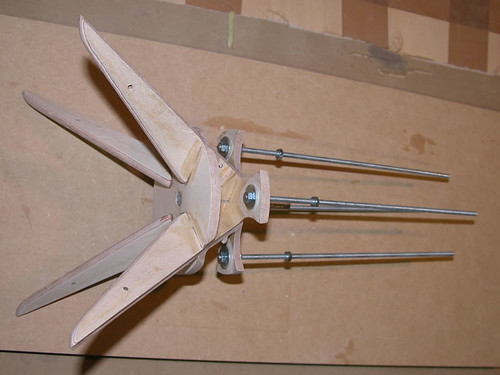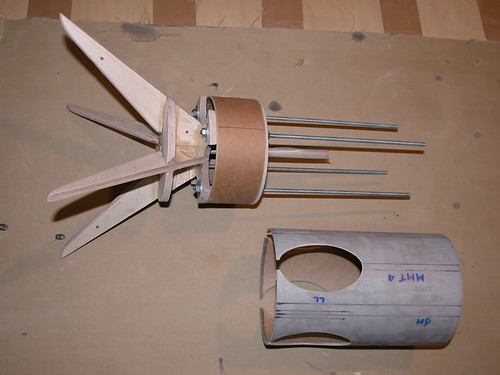Giacomo,
Brilliant, brilliant, brilliant! I love how you did the booster mold transition skin! I wish I had done my capsule skin that way.
Making the capsule skin was one of the most difficult parts for me. I made mine out of a big piece of posterboard and built it like a transition. I used one of the online programs to figure out the radii and angles and then used a compass and piece of string to draw the arcs. I can't even remember how many pieces I went through just to get one that fit correctly.
It never occurred to me to slowly roll the capsule on the skin material marking as you go. That is SOOOO much easier and smarter. LOL, if I build another now it will take half the time.

What a great idea!
I am really glad to see you are building a launch stand. Not only is it a great display stand, but for launching I just stick a long launch rod in the ground in the inside of the launch stand, slide the model down the rod, and position the launch stand accordingly. I set up the internal launch lug the same distance off center as the outside edge of the escape motor tube. The lug goes from the bottom of the capsule to the top of the capsule, and there are corresponding holes (but no internal tube) in the escape rocket skirt and motor mount base.
It turns out that this was luckily at just the right spot to miss the tower cross members as the rod passes through.
I don't recall seeing in the plans where you are planning to put the launch lugs but this model definitely needs them. Although the real Pad Aborts were launched off the ground without any guide rail, Gordy and I have found these models are extremely prone to weathercocking off the launch pad. Although once it gets up to speed the capsule acts like a cone rocket and self-stabilizes well, right off the launch pad it is going so slowly that the capsule acts more like a parachute. Gordy actually crashed his on its second flight when it went horizontal off the launch pad in fairly breezy conditions. Since then we are REALLY careful to not launch if it's windy.
The video I did of the
Pad Abort Project shows this effect very well in the video of the NARAM 50 flight at the end of the video. Watch the smoke trail and you can see how the capsule completely changes direction just a few feet off the pad.
To be honest, I built my model with a 3/16" lug all the way through but the holes are just the tiniest bit off line so a 3/16" rod binds and I end up using a 1/8" rod (4 feet long). The rod is a bit flimsier than what I would prefer but it is definitely necessary. With the HPR motors you are going to need something much more substantial. As with everything in this thread, I will look forward to seeing how you do it.
Giacomo, it is such a treat to watch you build this!




